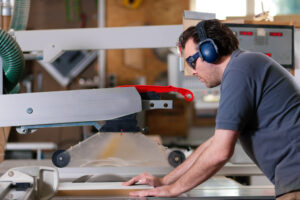Most individuals think that as they get older hearing loss will be unavoidable. In truth, damage from repeated exposure to loud noise is also a leading factor. Every exposure to loud noise, whether at a concert, mowing the lawn, or through loud earbuds, adds up over time, resulting in permanent hearing loss. Alarmingly, this issue is not limited to older adults; even children are now showing signs of preventable hearing loss.
About 34 million youngsters around the world are experiencing hearing loss, and up to 60% of these cases are avoidable. The number of instances in adults is even more startling and seriously needs to be addressed.
Understanding today’s factors contributing to hearing loss
Understanding today’s factors that play a role in hearing loss is important in knowing why it has become so much more common. Numerous factors contribute to this issue, each interconnected and increasing the danger of hearing damage:
- Social Environments: There’s often an excessive amount of noise in current social settings like restaurants and bars. The misconception that a noisy atmosphere equals success has led many businesses to boost their volume levels. Cumulative hearing damage can be the consequence of the background noise in these places, even if there is no live music.
- Urbanization and Population Density: The world’s cities are more heavily populated than they ever were. With more people living in close quarters, the volume levels in urban environments have increased considerably. From traffic to construction, urban noise is a continual attack on our ears, contributing to the growing incidence of hearing loss.
- Technological Advancements: The prevalent use of earphones and earbuds is possibly the most significant factor in the rise of hearing loss. It’s easier than ever before to listen to music and podcasts because of headphones and earbuds. However, the proximity of these devices to the ear, combined with the tendency to increase the volume, can cause significant harm. This sort of damage builds-up slowly often going undetected until it starts to become noticeable and irreversible.
It’s important to recognize that while noise has always been a part of human life, from the roars of ancient beasts to the raging of steam engines, the contemporary world presents new difficulties. Today’s noise levels, together with the availability of technology, create a perfect storm for hearing loss.
Prevent hearing loss – practical steps
Why hearing loss remains such a widespread problem is somewhat a mystery considering how preventable most forms are, particularly in children. Awareness and personal responsibility are the secrets to prevention. Here are a few practical approaches to help preserve optimum hearing health:
- Monitor The Volume of Your Earbuds: You can conveniently enjoy listening to your favorite audio content on personal audio devices like earbuds, but they also present a considerable threat to your hearing if they aren’t used conscientiously. If your device includes a noise limit setting, you can use it to protect your ears from harmful sound levels. Taking the time to adjust these settings can prevent ongoing damage to your hearing.
- Be Careful About Moderate Noise Exposure: While loud noises are the most obvious hazard to hearing, prolonged exposure to moderate noise can be just as damaging. City noise, for example, may not seem harmful in small amounts, but over extended periods, it can play a role in hearing loss. Understanding that noise damage is cumulative is crucial for taking practical measures to safeguard your ears.
- Leverage Technology to Protect Your Hearing: A number of apps are available that can determine ambient noise levels and provide real-time feedback on whether your environment is safe for your ears. These tools are invaluable for raising awareness and making informed decisions about your surroundings.
- Use Ear Protection: It’s crucial that you use ear protection if you’re going to be exposed to loud noises like a lawnmower or a rock concert. The threat of hearing loss will be greatly reduced by using earmuffs or earplugs which are affordable and readily available. This basic step is frequently neglected but can make a significant difference in maintaining your hearing.
The power of knowledge in hearing protection
For people working in loud environments like factories or stadiums, safeguarding hearing can be more daunting. However, rigorous occupational safety regulations are in place to safeguard workers’ hearing health. Familiarizing yourself with these regulations and ensuring they are enforced can prevent occupational hearing loss.
Ultimately, the more informed you are, the better prepared you’ll be to safeguard your hearing. This knowledge goes beyond understanding your environment; it also includes being aware of workplace policies and seeking professional advice when required.
We can give you individualized guidance about how to better protect your hearing and also help you get a better understanding of your present level of hearing health. Bear in mind, hearing loss is not an inevitable fate. It is possible to maintain the health of your hearing and, with the appropriate precautions, continue to enjoy the sounds of your life for many more years.
[blogcta]





